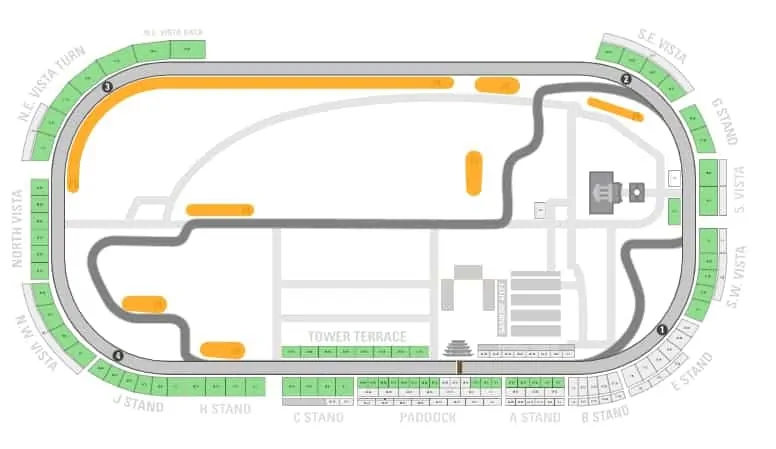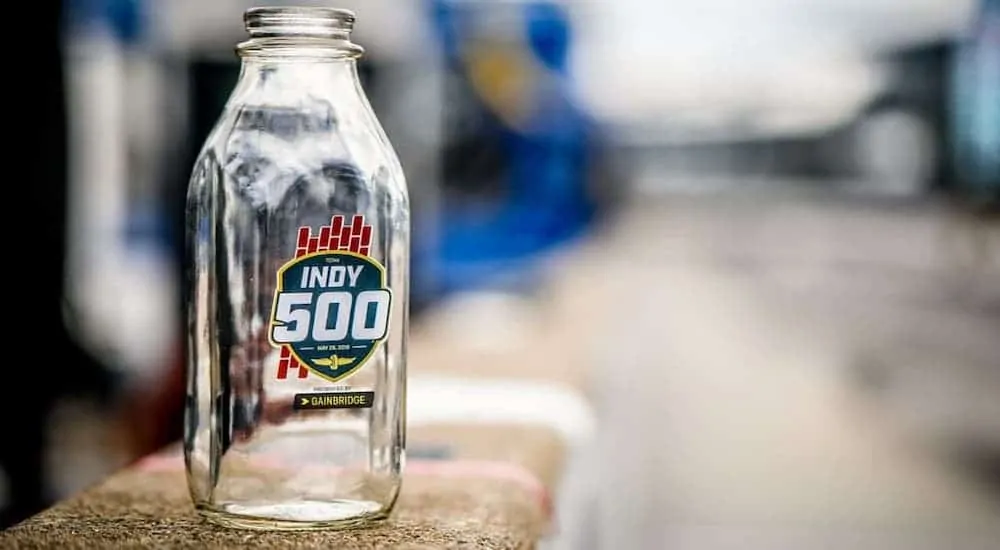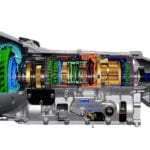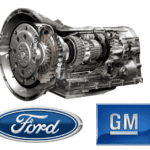Please be aware that events and locations may be closed due to growing health concerns.
May would have seen America’s greatest racing event of the year––the 104th Indianapolis 500, but due to unprecedented circumstances, the race has been postponed to August 23rd. This is not only one of the oldest motorsports races in existence, but it is also one of the fastest, with competitors reaching speeds of over 220 miles per hour. Although the big race will now take place on August 23rd, it will be preceded by two weeks of practice runs and qualifiers that are also open to the public. So to prepare for this grand event, here is a rundown of both what to expect and some of the history of the race and its location.
A Historic Location
The site of the 104th Indianapolis 500 will, of course, be the Indianapolis Motor Speedway, which gives the race its name. Not only is it America’s very first speedway, but this track is one of the oldest auto racing sites in the entire world. It was first constructed back in 1909 and has remained essentially unchanged for the past 111 years. The greatest difference between now and then is the track’s surface. When first constructed, it was actually a dirt track, although a series of fatal accidents meant that it was soon converted to brick. This brick surface gave the Indianapolis Motor Speedway its famous nickname of “the Brickyard.” However, as cars got even faster, the brick was slowly replaced with asphalt beginning in 1935. By 1961 almost the entire surface was paved, giving the track its current form. However, in honor of the track’s history, a one-yard wide band of brick was left unpaved and today marks the starting line for races.
However, if the track has remained mostly unchanged, its surroundings have not. Once well outside of the Indianapolis city boundaries, over the past century, the Indianapolis Motor Speedway has seen the city grow around it. In fact, it is technically located in the town of Speedway, Indiana, which was incorporated nearly twenty years after the track that it gets its name from was built. The track infrastructure has also grown several times over. When it was first constructed, there was only seating for 12,000 spectators. But today, the stands seat over 257,000 people. The distinctive multistory Panasonic Pagoda, constructed in 2000, also now looms over the track.

High-Speed Competition
The very 1st Indianapolis 500 was run in May of 1911, just three years after the Indianapolis Motor Speedway was constructed. Reading that, you might be doing some math and wondering why this year’s race is the 104th rather than the 110th. The reason is World War I and World II. During these global conflicts, racing was banned in the United States in order to conserve fuel and rubber needed for the war effort. These bans meant that the Indianapolis 500 was not held from 1917 to 1918 or from 1942 to 1945. Subtracting those six years, makes this year’s race the 104th.
Although the Indianapolis Motor Speedway does have a road course, the Indianapolis 500 takes place on the original oval track. This track measures 2.5 miles in length, with the longest straight sections running for a bit over half a mile. The 500-mile race (hence the name) requires drivers to complete 200 circuits of the track. For the first Indianapolis 500 back in 1911, this took the winning car 6 hours, 42 minutes, and 8 seconds at an average speed of 74 miles per hour. Needless to say, today’s cars are far, far faster, and the current record is just 2 hours, 40 minutes, and 3 seconds. This record was established in 2013 by Tony Kanaan and required driving at an incredible average speed of 187 miles per hour.
The rules of the Indianapolis 500 have, of course, changed considerably over its long history. The current sanctioning body is IndyCar, which only dates back to 1996 (although it went by Indy Racing League until 2011). However, most of the traditions and rules of the Indianapolis 500 date back far longer than the governing body. Probably the most peculiar of these is the tradition of the winner being given a bottle of milk. This dates back to 1936 when the winner, Louis Meyer, was photographed drinking a bottle of milk while celebrating his 3rd Indianapolis 500 victory.
All cars in the 104th Indianapolis 500 will be powered by 2.2-liter turbocharged V6 engines producing up to 700 horsepower. Although this might not seem like much for some of the fastest racing in the world, the cars weigh less than 2,000 pounds fully loaded. The engines are also noteworthy for being extremely high revving and can reach over 12,000 rpm. There are currently only two manufacturers for IndyCar engines––Chevrolet and Honda. However, all the car bodies are built by the Italian manufacturer Dallara, with the current DW12 design dating back to 2012. The “DW” in the designation honors former two-time Indianapolis 500 winner Dan Wheldon, who was killed in a crash on the Las Vegas Motor Speedway in 2011. For 2020, there will be one minor change to the car design––a new AeroShield and halo.
Two Weeks of Events
As always, the 104th Indianapolis 500 will be preceded by several days of practice and qualifying events. The opening day will be August 12th, marking the beginning of several days of public practice. But although attending on these days can be fun and is quite cheap if you are in the area (tickets starting at $15), the real excitement will begin on the weekend of the 15th and 16th. On those days, there will be more open practice, but there will also be the qualifiers to determine the starting position. These positions will be assigned based on the drivers’ times on a four-lap circuit of the tracks. Up to four attempts can be made, but by the end of Saturday, the drivers in 10th through 30th place are locked in. The drivers in 1st through 9th as well as those in 31st and below will then have additional rounds qualifiers on Sunday to lock in their positions. Since there are only 33 positions in the race, there will be fierce competition for those final three spots. After all the qualifiers are completed, there will be one last round of practice on the 20th.
However, two days before the big race on August 23rd, there will also be another race––the Indy Lights Freedom 100. Intended for newer drivers, this event largely mirrors the Indianapolis 500, except that it consists of only 40 laps. However, just because it is for newer drivers does not mean that it is slow, and the speeds attained in the Indy Lights Freedom 100 can be just as high as those in the main event. August 21st also marks “Carb Day.” Originally named because it was the last day that the competitors could tune their carburetors for the upcoming race, it is now a large celebration that includes events such as the “Pit Stop Challenge” and culminates in a concert. Finally, on August 22nd, there is “Legends Day,” where the spectators can meet and get autographs from the drivers.
But when the 104th Indianapolis 500 finally kicks off at 12:45 on August 23rd, all of the excitement of preceding two weeks will be forgotten as some of the best drivers in the world compete at high speeds to see which one of them will be crowned the champion.





